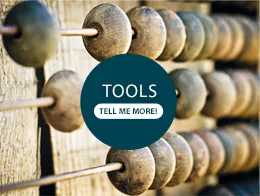Tom Vanneste and his friends liked to sail competitively off the coast of Tanzania. Searching for an edge, they instead stumbled onto a game-changer for African agriculture.
Looking into wind power and direction in an effort to improve his sailing, Vanneste began to study weather patterns on the east coast of Africa and learned there were very few weather stations in Tanzania — or anywhere in Africa for that matter.
Unreliable weather forecasting is bad for sailing. In the drive to be more competitive, in 2006 Vanneste’s engineer friends, Olivier Smeenk and his father, Jan-Willem, set out to build their own weather station at their yacht club in Dar es Salaam.
“It’s not a very romantic beginning,” Vanneste says. “But we wanted to be more competitive, and we realized that the nearest weather station was at the airport, nearly 30 miles away.”
The yacht club weather station — a simple device about the size of a small potted tree — worked well. When they realized how well, they also realized how much more it could be.
A SOCIAL ENTREPRENEUR FROM THE BEGINNING
Community work is in Vanneste’s nature. Born in Rwanda to social entrepreneur parents, he fled genocide in 1994 with his family and relocated to Tanzania, where his parents ran a community project that helped locals get cataract surgery. The family eventually opened a hospital, and Vanneste became its deputy director.
Years later, looking beyond their use in competitive sailboat racing, Vanneste realized the simple but effective weather stations his friends had designed could be used to help some of Africa’s most vulnerable people: small farmers.
“Climate change is disrupting weather patterns significantly,” Vanneste said. “And that hits small farms hard, where farmers have always been able to rely on traditional weather methods, like watching the birds or the color of the mountains. Climate change has made this traditional knowledge invalid.”
In 2010, Vanneste and the Smeenks conceived the idea to found a company to set up the weather stations widely, hoping to close Africa’s weather information gap. They named the company Kukua, which means “to grow” in Swahili.
DESIGNING ‘FRUGAL’ WEATHER STATIONS
As Vanneste describes them, the weather stations are “frugal.” He said while stations in the EU and the U.S. are extremely sophisticated and expensive, they’re not suitable for Africa, where it often is difficult to get spare parts, electricity, or regular maintenance.
Kukua’s design was to remove all the bells and whistles of modern weather stations and build one with only the essentials, powered by a solar panel the size of a hand. Each station has a SIM card that posts raw data online every five minutes; that data is sent to a forecasting company that combines it with satellite data to produce a reliable weather forecast.
Once the information is in the system, it can be sent to farmers via text message.
MAKING CONNECTIONS WITH LBS AND FREE SAMPLES

Tom Vanneste, second from left, installed a Kukua weather station at LBS. Courtesy photo
But even with a working product, it was difficult to get funding and distribution capability. Vanneste said the main problem was that he and his partners had no credibility. It wasn’t until he entered London Business School’s MBA program that things took off.
Realizing he needed to be a better manager as deputy director of his parents’ hospital, Vanneste decided to get an MBA. But business school offered another benefit: It turned out to be the perfect environment to start a company in, with the right mix of encouragement and advice for Vanneste’s venture.
Things began to progress. Kukua had sent out free weather stations to organizations they wanted to work with. No money was coming in yet, but 20 stations were set up in five African countries and the data was pouring in. With the benefits now tangible, the International Institute of Tropical Agriculture, based in Nigeria, reached out to form a partnership.
IITA and Kukua agreed to jointly manage a network of stations, and to make sure the data from the stations would reach researchers and agricultural economists as well as the rural farmers Kukua was created for. Now, with IITA’s help, Kukua is poised to install 65 new stations across Nigeria. “The average distance between stations is more than 200 kilometers,” Vanneste says. “It’s a huge supply chain and logistical nightmare, and IITA has been vital to helping us get it right.”
THE DRIVE FOR A BETTER BUSINESS MODEL
But how to make money? Vanneste says he’s settled on a few different approaches.
The first is to sell the hardware. The actual cost of making a weather station is about $500, but maintenance and collecting data are expensive. So Kukua is valuing each at about $2,000, he says, which includes installation, maintenance and operations for two years.
“We make money now from selling weather stations,” Vanneste says. “But that’s not what we want to do. We want to eventually generate revenue from data sales.”
He’s hoping to sell the weather data to commercial players, like telecom companies, commodity traders, or anyone whose operations could run smoother with better weather forecasting.
“We’re also talking to investors, because there’s a lot of people who see it as an enabler for other projects,” Vanneste says. “Imagine you want to invest in agriculture in Africa. If you want to buy a plot of land, your biggest risk is weather, and at the moment you simply cannot access weather data.” They’re also targeting donors, like UNICEF and other aid organizations that might need weather data to stimulate agriculture and livestock programs.
A PRODUCT FARMERS ARE WILLING TO PAY FOR
Vanneste believes the small farmers for whom Kukua was built might be able to help keep the company afloat. Most farmers in Vanneste’s target demographic have old phones, he says, but they’re capable of receiving text messages, and he believes they’re willing to pay a small amount, 1 or 2 cents, for weather information.
Vanneste believes that if enough farmers sign up, Kukua might make enough for weather station maintenance.
In the meantime, he and the Smeenks are looking for funding from competitions. Last August they entered a European Union competition, participated in a pitching round before judges, and won 100,000 euros. They’re hoping to do it again, and Vanneste said they’re applying like crazy.
ASPIRATION TO BECOME THE THIRD-MOST VISITED APP IN AFRICA
In five years, Vanneste says, they want to have an app, an SMS service and 10,000 weather stations across Africa.
He says their dream is to be the most popular app in Africa after Facebook and WhatsApp.
“It’s about changing lives,” he says. “It’s not about becoming rich, or even earning money from it. It’s about laying the foundation to help people. We want to look back and know we did something to help these people be more secure in their livelihoods.”



